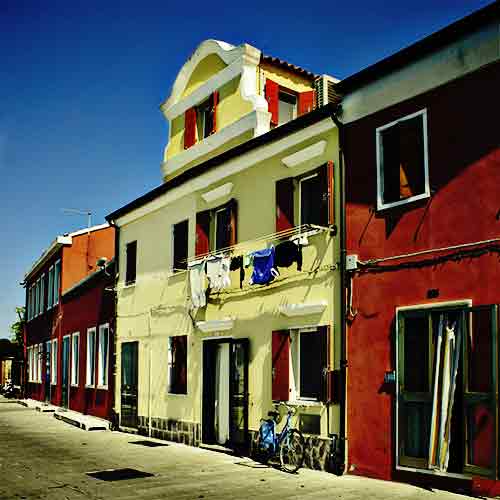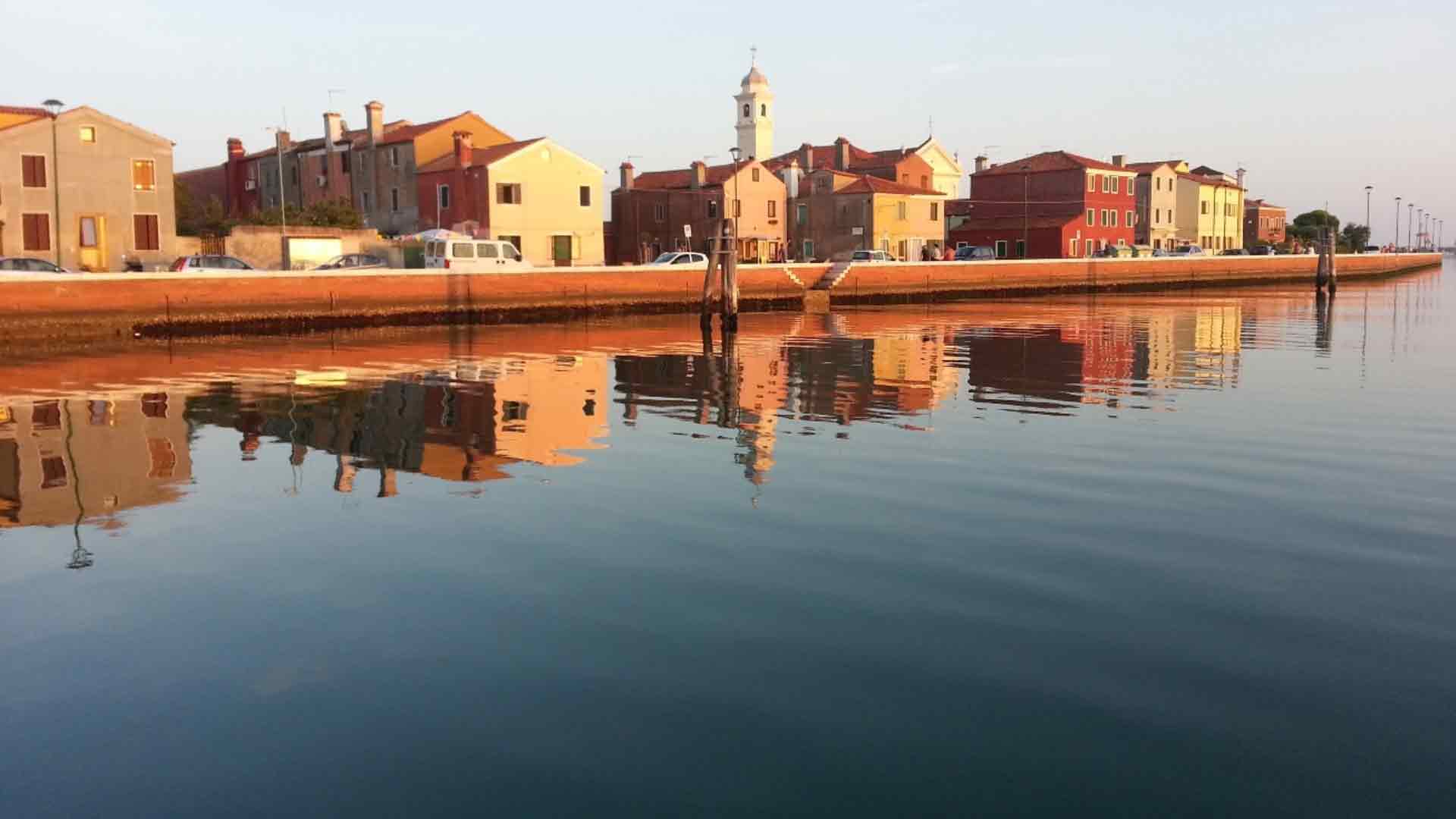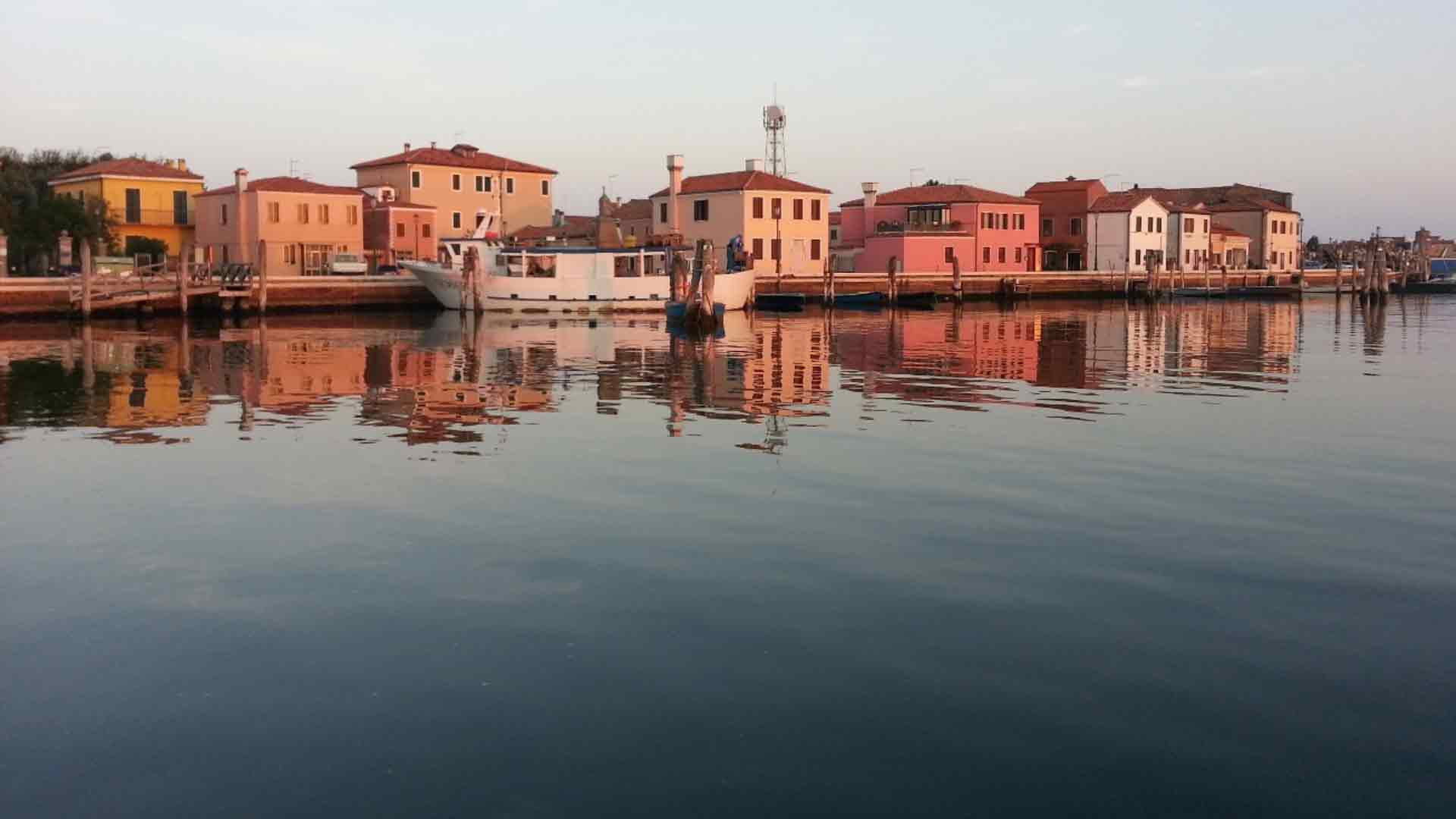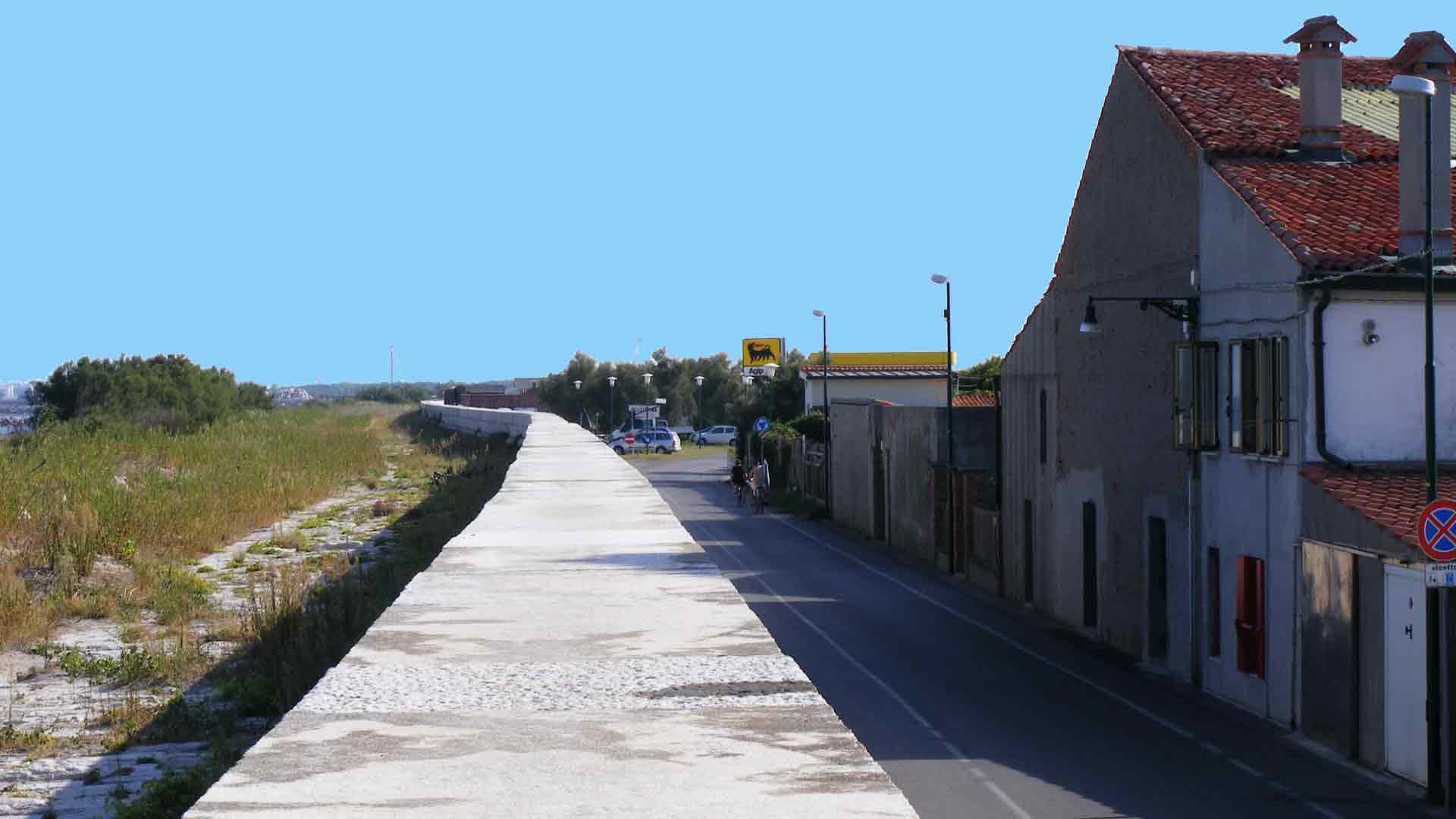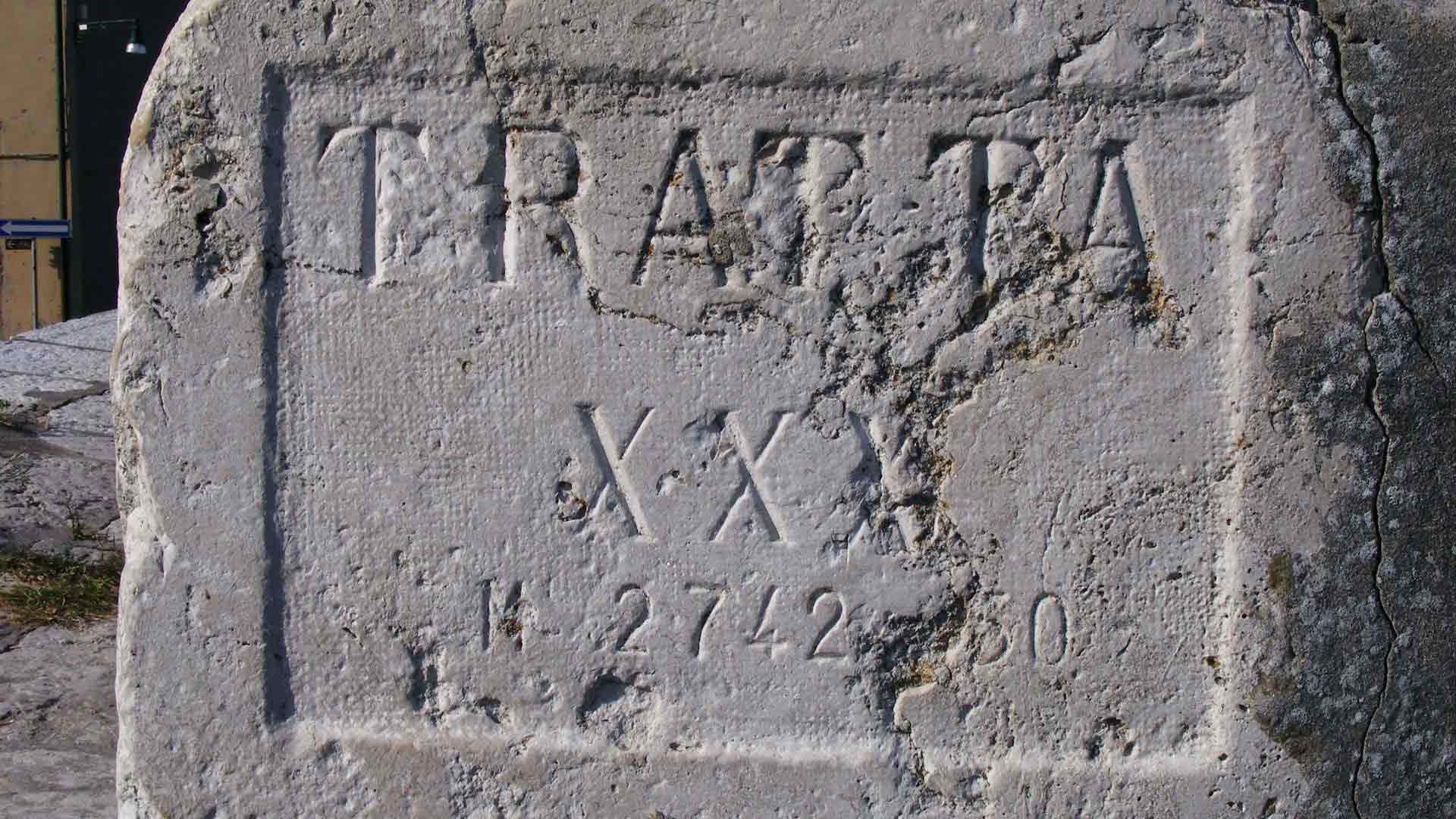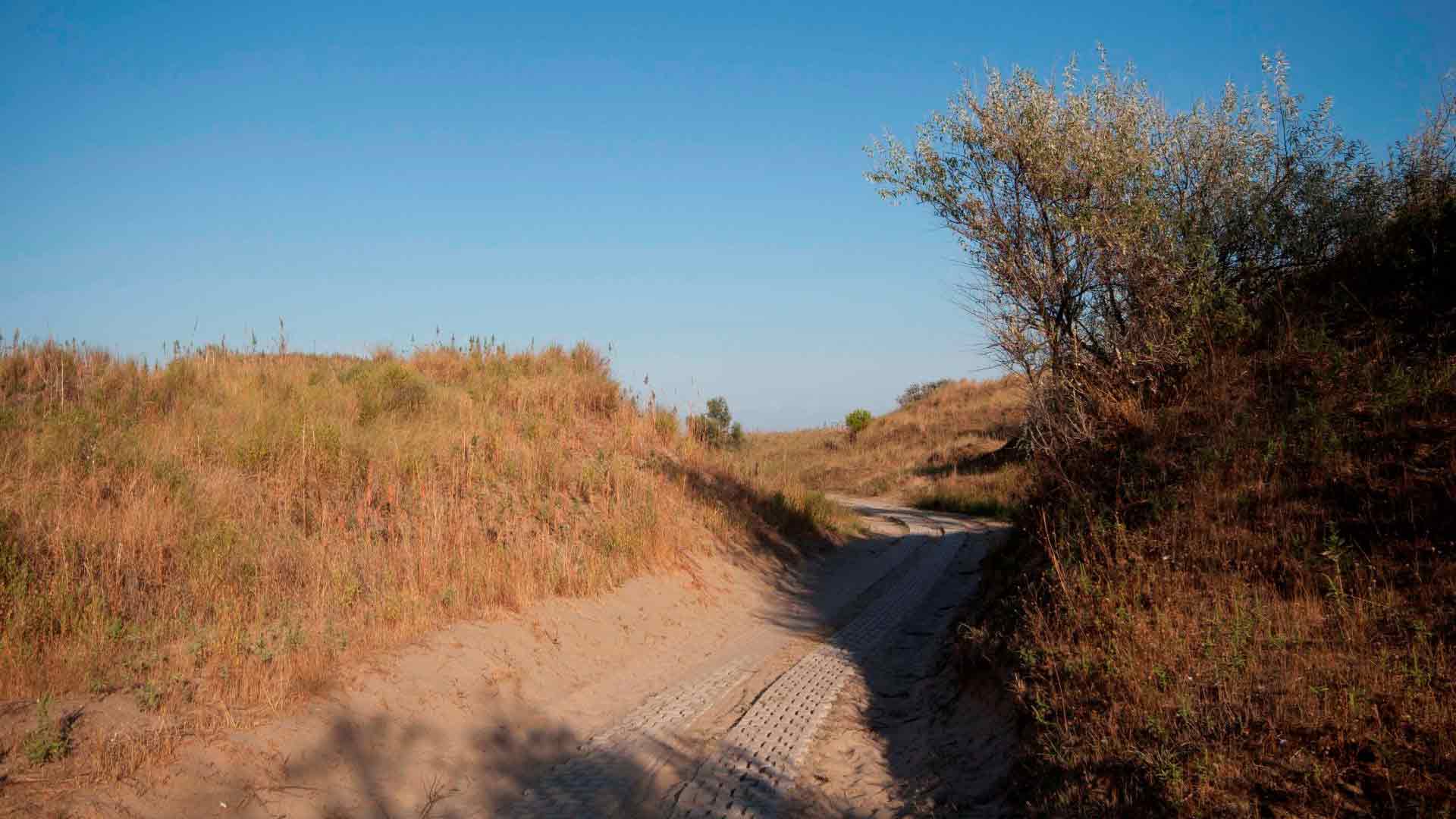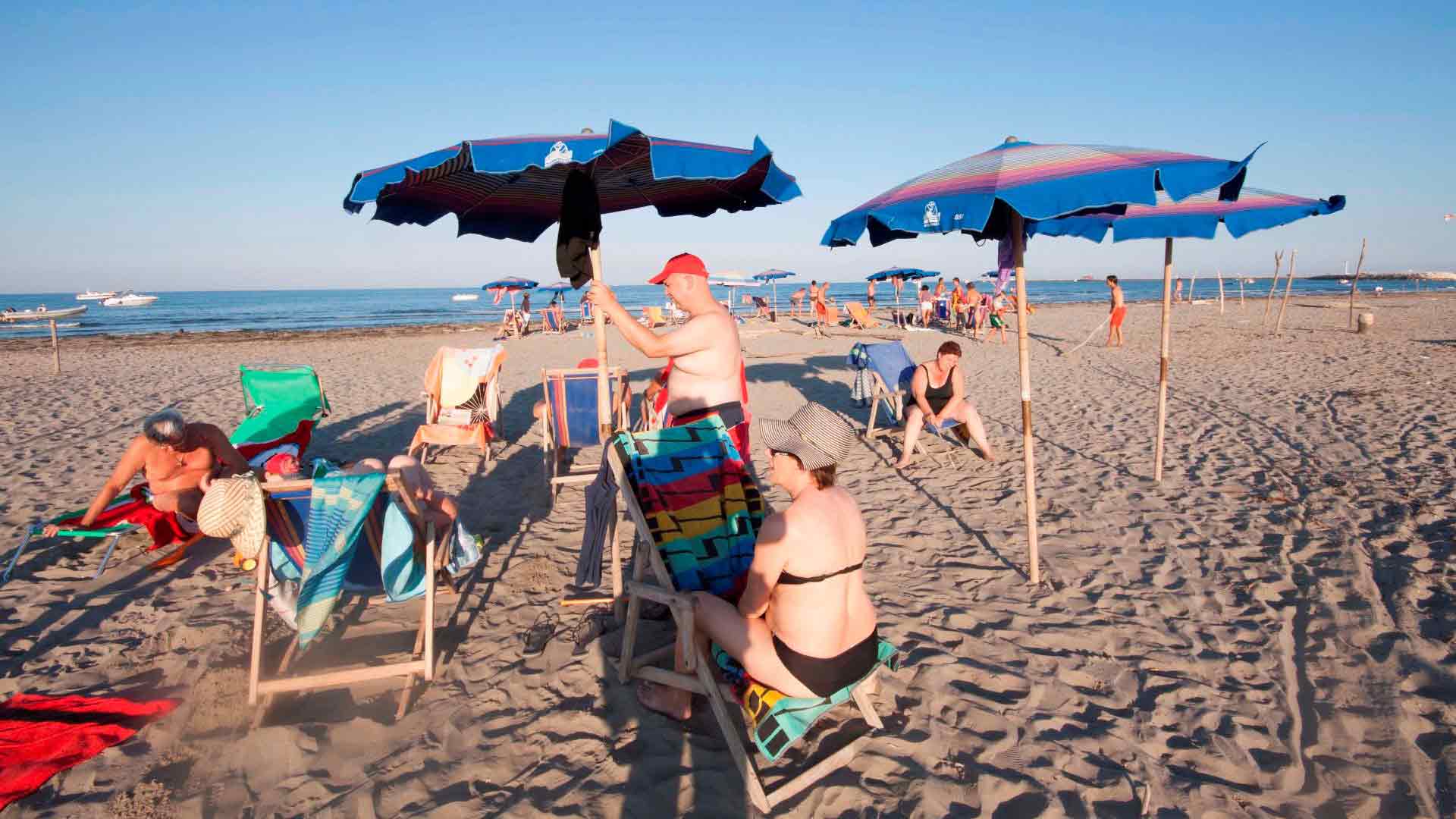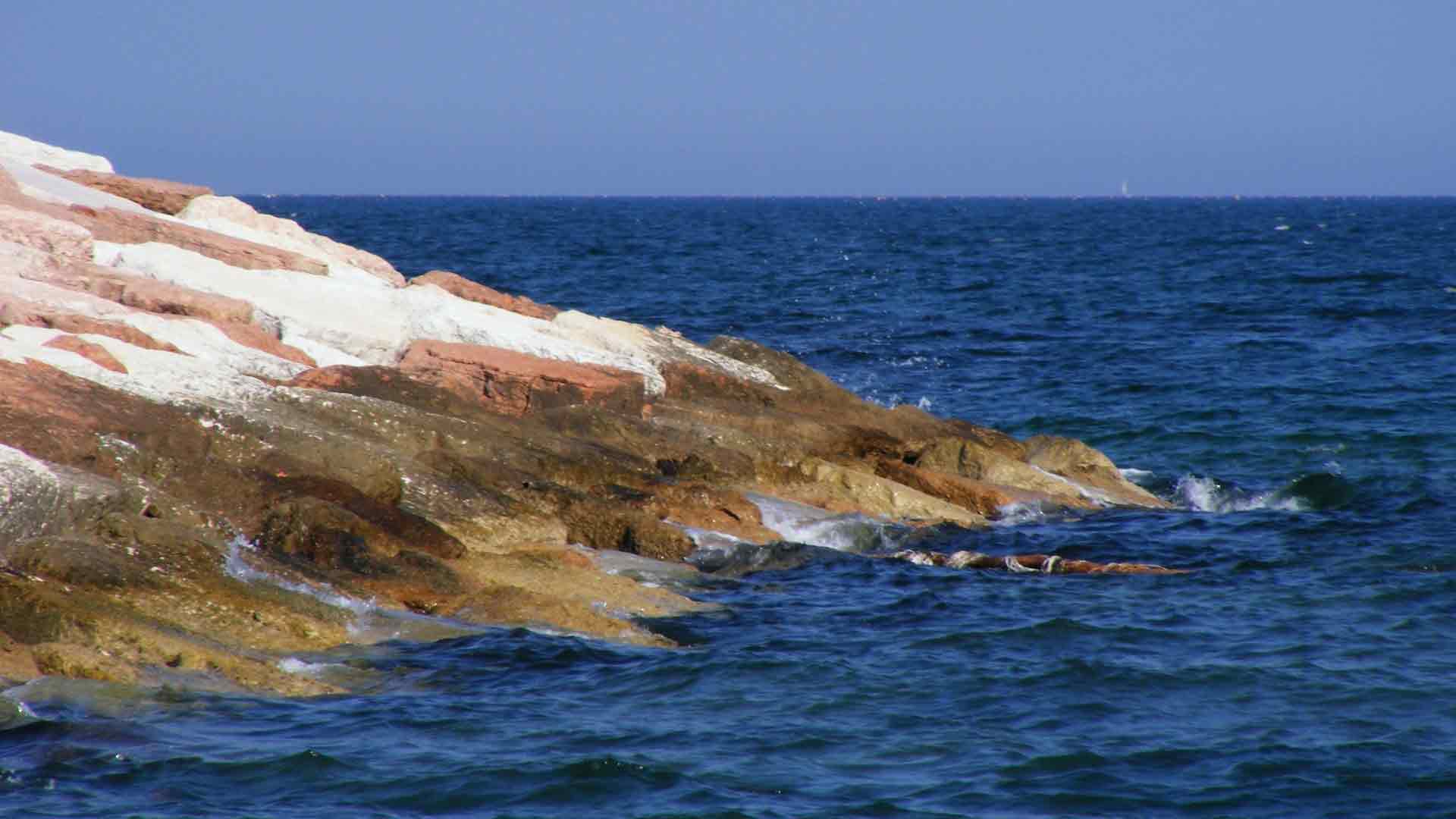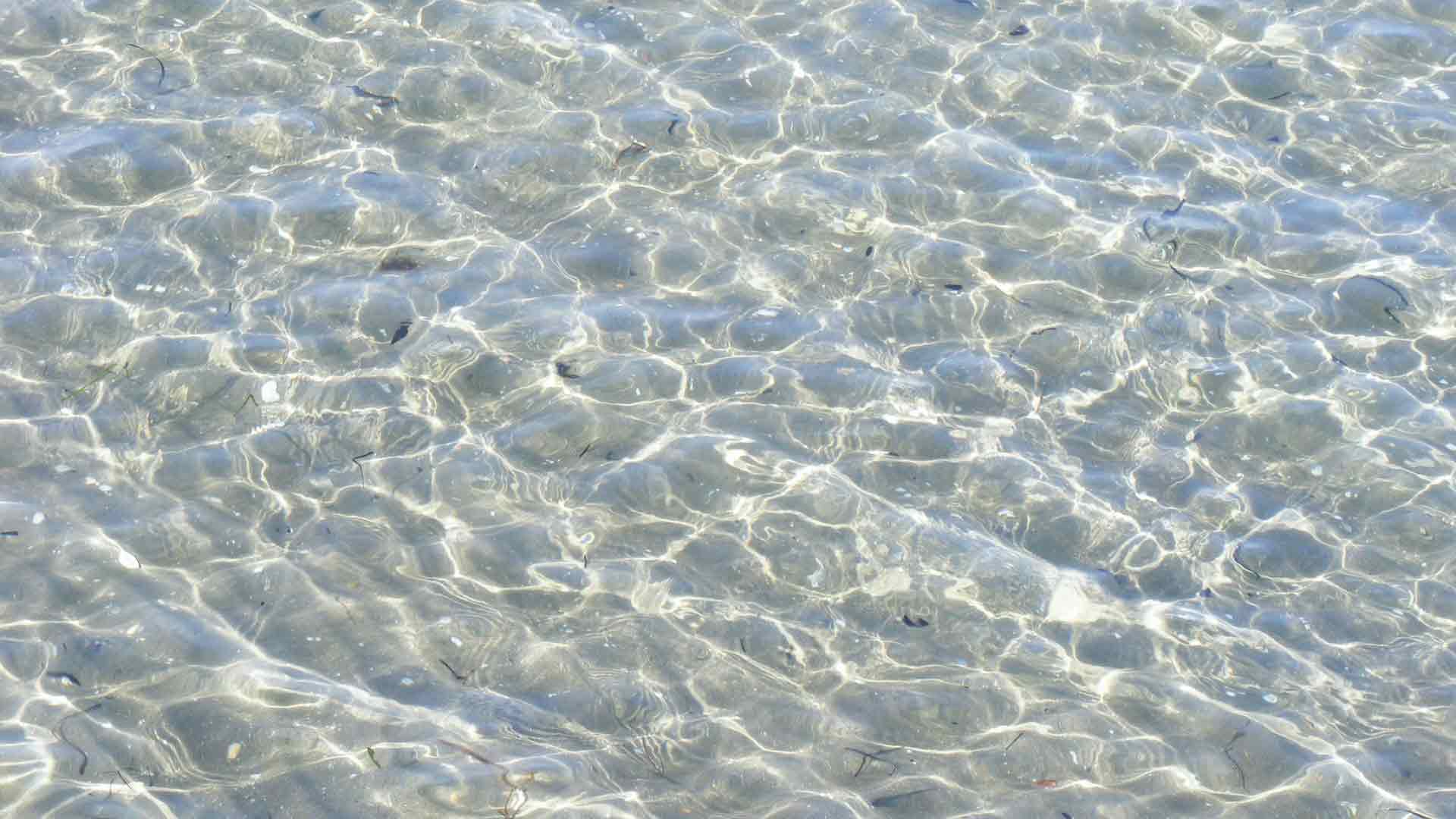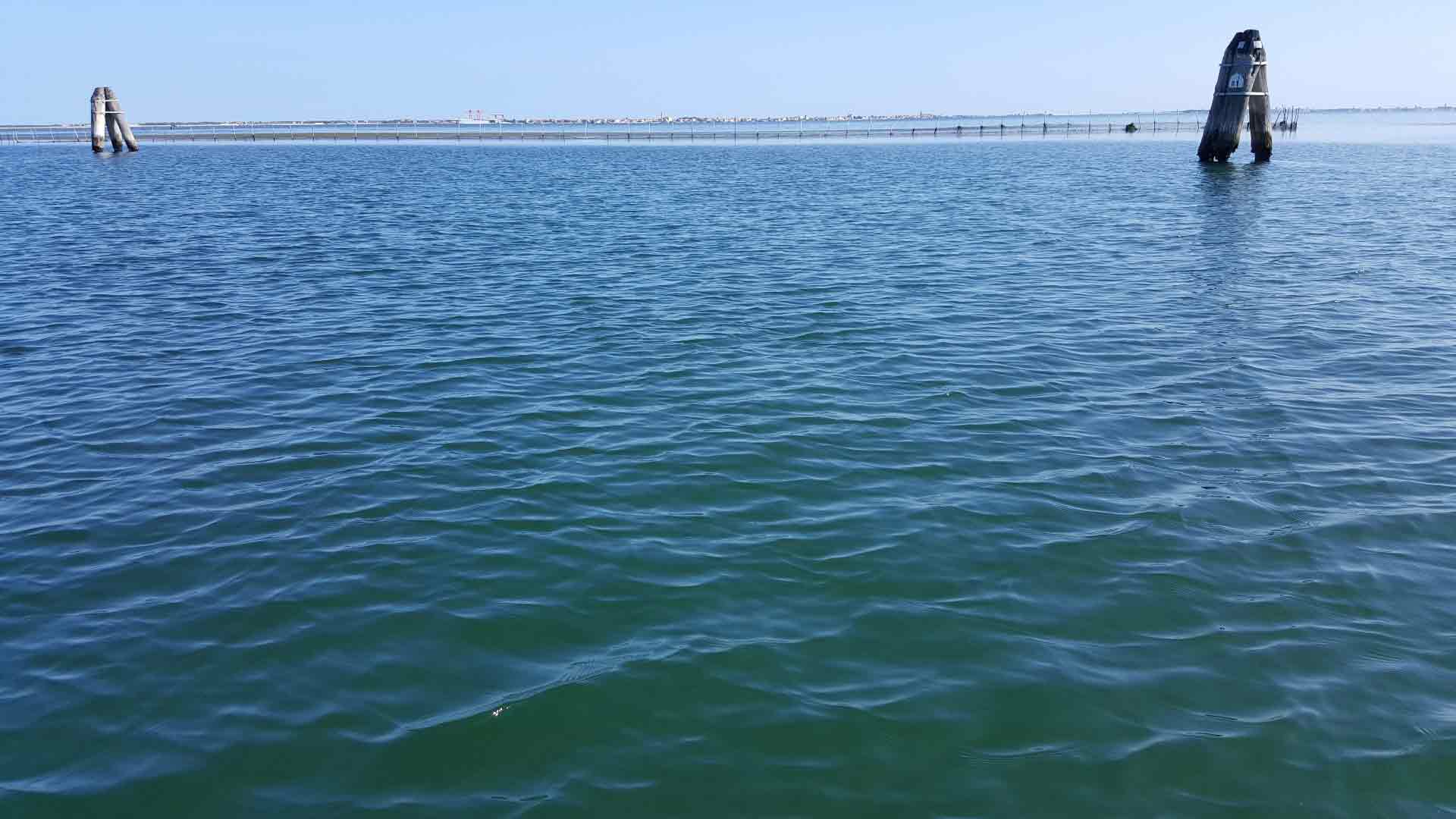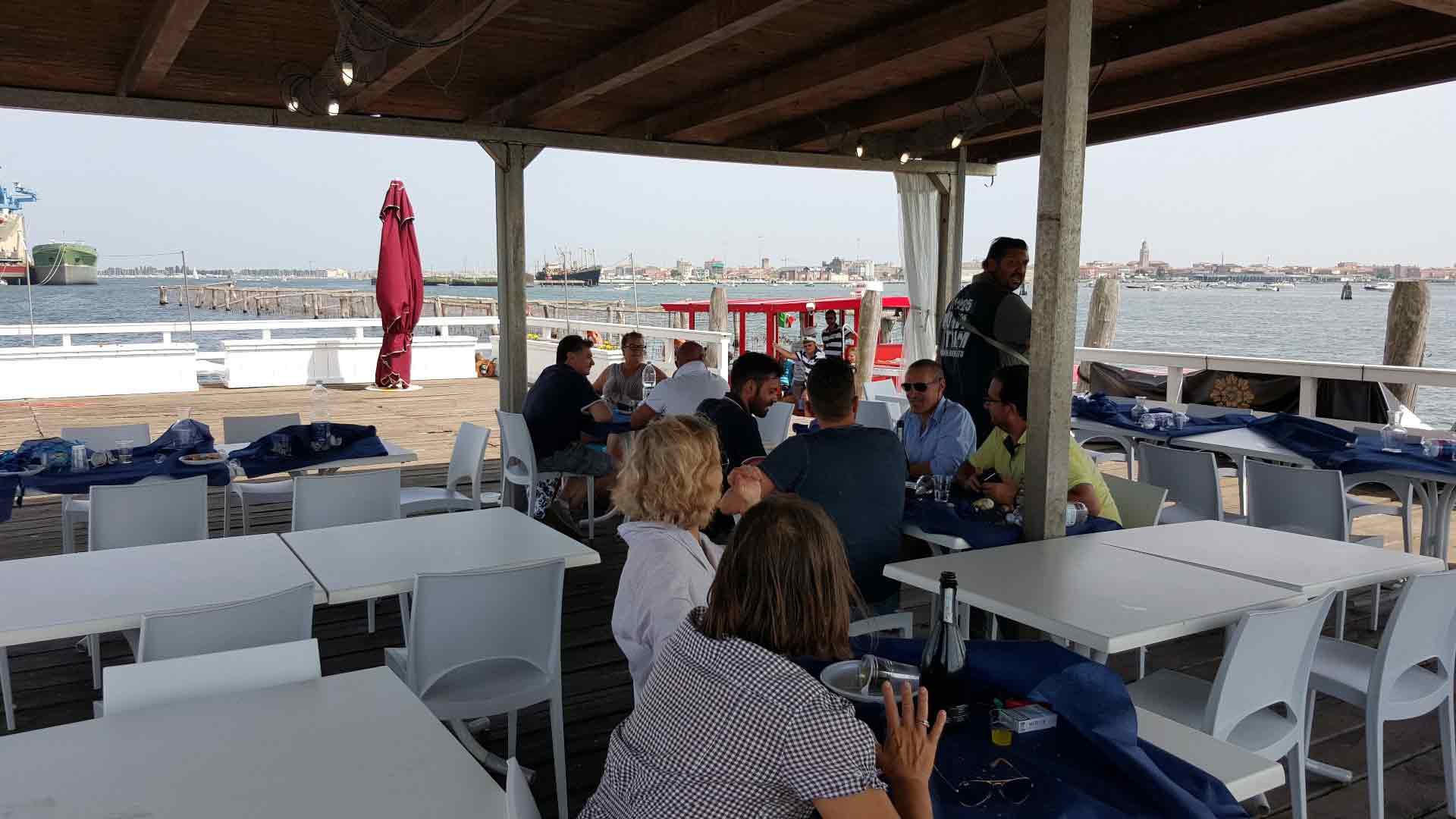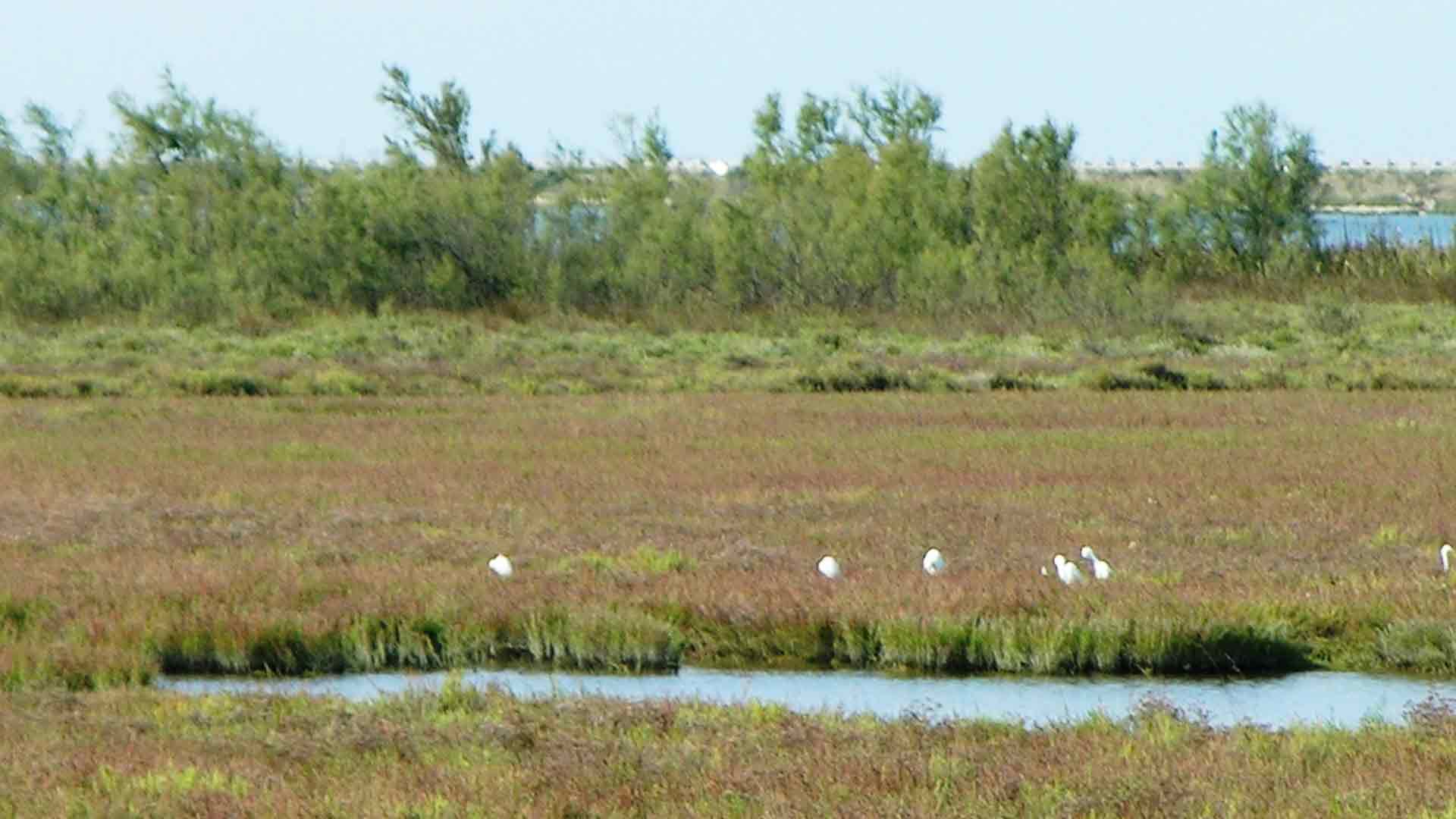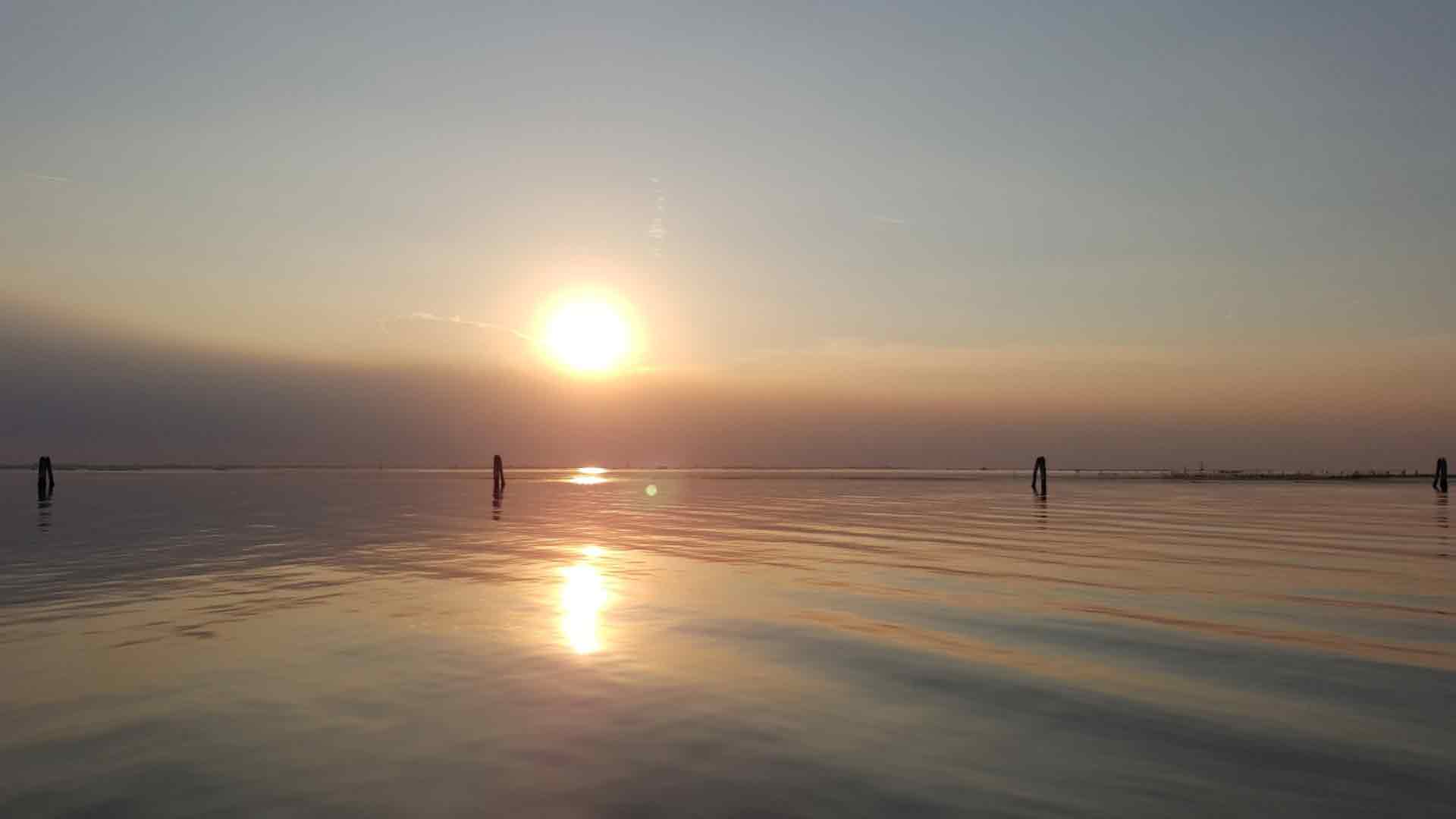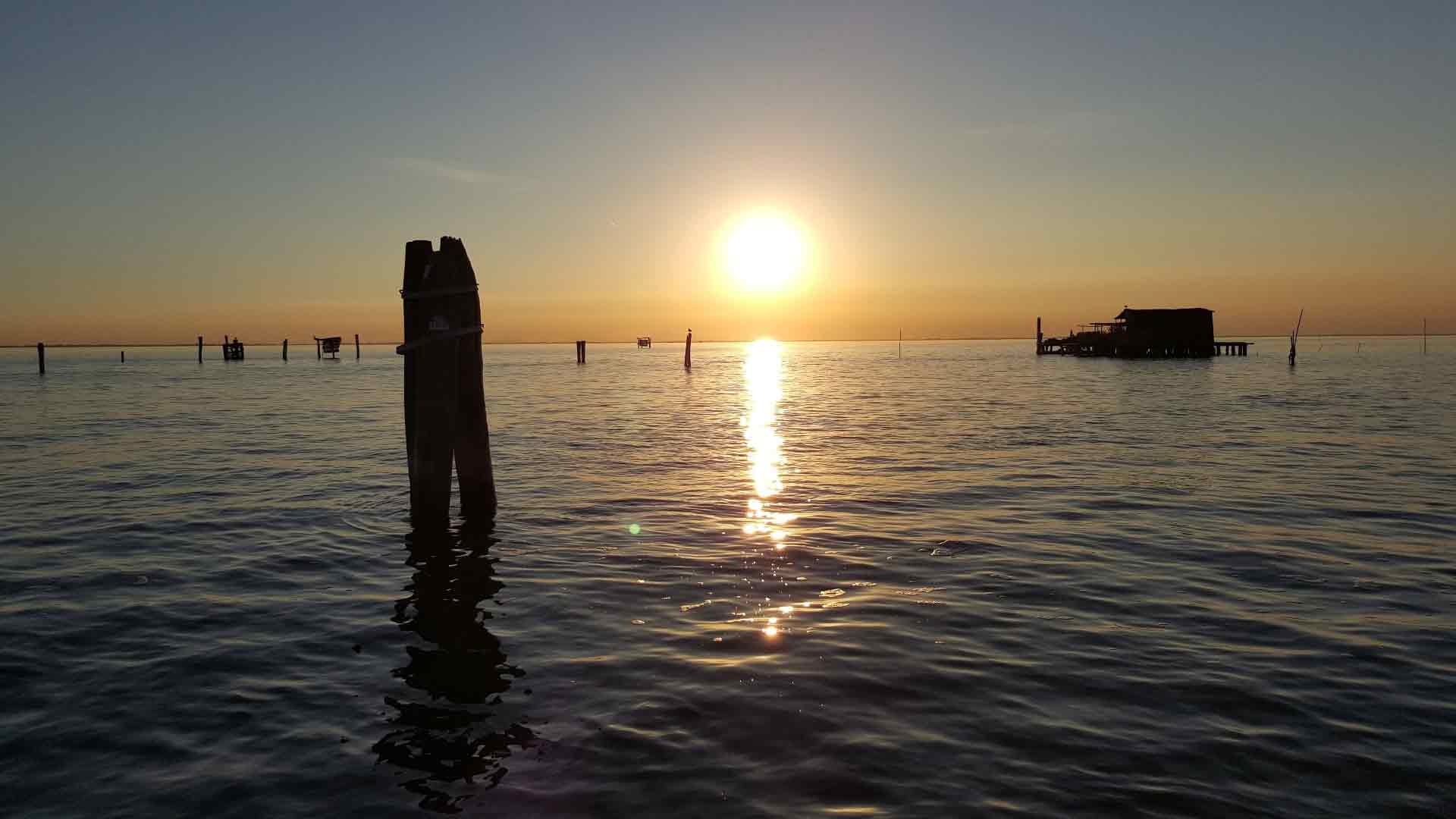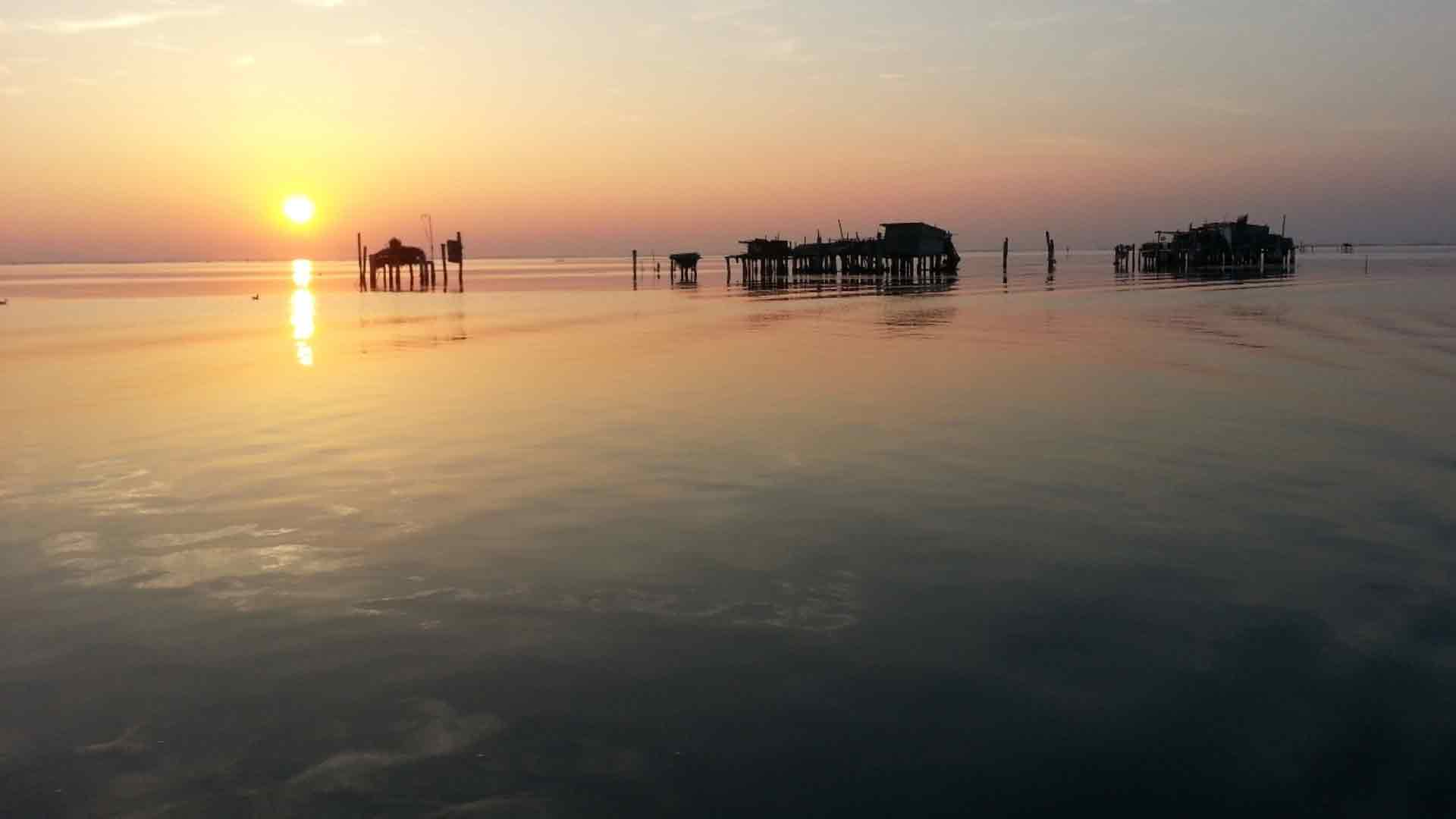Pellestrina. A long strip of earth and sand, quilted colourful fishermen’s houses, marked by a strip of asphalt that unfolds along an ancient city wall made of huge blocks of stone as white as snow.
Between sea and lagoon
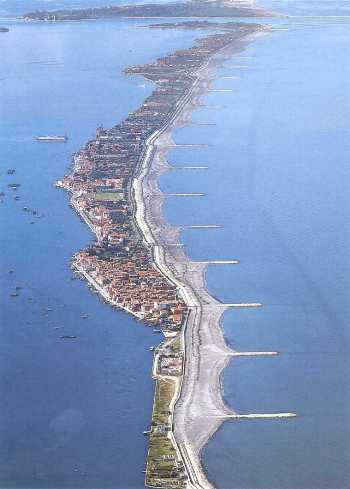
On one side the open sea which ends up on the rocks of the Upper Adriatic in Croatia, across an expanse of sea that looks like a placid lake studded with piles and piles: “bricole“ are called, are used to delimit navigation channels to avoid to be stranded between the sandbanks beaches covered by a few centimeters of water. Along the shore, the expanse of boats and fishing vessels as far as the eye can see.
That’s what the island of Pellestrina: the clear boundary between the lagoon and the open sea that goes for 11 kilometers, between the channels of Chioggia and Malamocco.
A thin barrier suspended between sea and lagoon, which measures just 500 meters at its widest point: what is just enough to host the two towns Pellestrina and San Pietro in Volta.
Rich in vegetable gardens and small coloured houses, the island is a pearl of nature and of human intelligence, a charming spot where the relationship between man and lagoon is still tight and intense is the activity in this delicate ecosystem: hunting, fishing , agriculture, tourism. Even today, the lace makers, the housewives sitting on their front doors to make leaping bobbin laces using the lace pillow.
A strip of land protected from the impetuosity of the sea water by one of the most powerful defenses that the Serenissima was able to build in the ‘700 to save her city: the Murazzi, an artificial reef, vertical to the lagoon and dripping towards the Adriatic.
It was built with blocks of Istrian stone processed in crude form for a stretch of about twenty kilometers, between those coasts that are the natural defense of the artistic, cultural and economic development that finds its core in Venice.
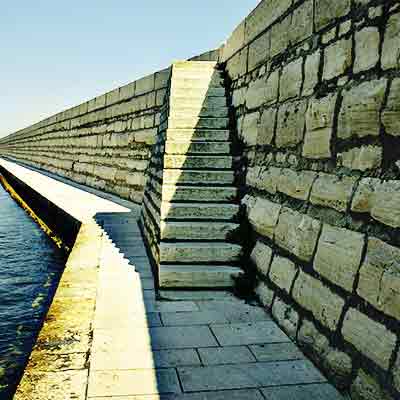
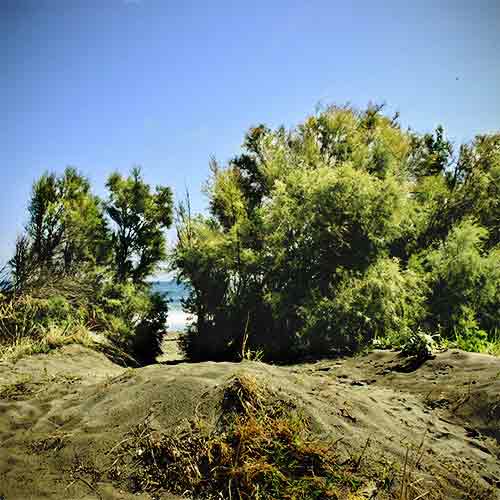
Besides the Murazzi, the erosion of the open sea had left only a simple cliff, until some years ago, through a system of brushes transverse seats at regular intervals has been restored to the original setting, with a wide sandy beach It has practically doubled the size of the island.
The lagoon is an ancient work of nature. Human art took possession of the most eminent points, and so Venice was born, connecting in itself a hundred islands, surrounded by a hundred others (Johann Wolfgang Goethe)
The island is crossed by a paved road that runs along the embankment from the landing stage of Santa Maria del Mare, towards Venice, to Pellestrina to Chioggia, where a dirt road leads through the woods of Ca’ Roman, which is a nature reserve of sand dunes covered with typical Mediterranean scrub.
Ca’ Roman is the green lung of the island, which opens for about forty hectares of beach, dunes and scrubland. It is the last refuge for many species of flora and fauna: pine trees turned into protected natural oasis, dwelling in particular of two bird species, the snowy plover and the little tern, which have found their ideal habitat.
A fascinating journey that you can do by bus or bicycle. The island is reached by boat from Chioggia, where you can pick up the bicycles, or the Lido of Venice by ferry from Faro Rocchetta.
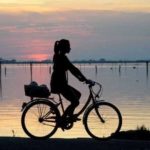
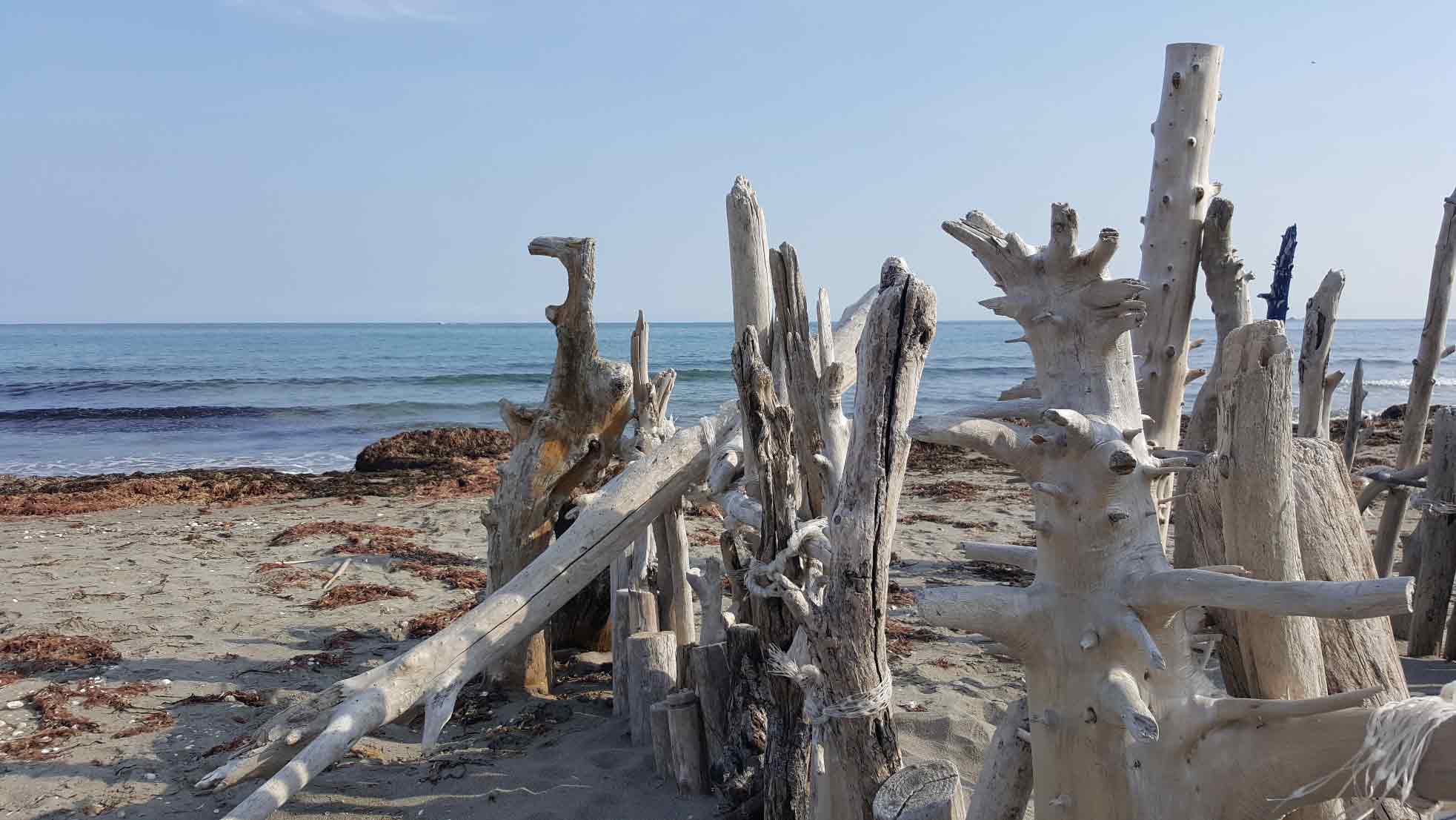
Suggestion. Park on Union Island in Chioggia and reach the pier ACTV Piazzetta Vigo. As soon as the boat arrives in Pellestrina there is the coincidence of the bus to the Lido of Venice where you can sail to St. Mark’s Square. But on the way back while returning it is worth stopping at one of the three locations on the island of Pellestrina, to stand on the sea walls and walk on the natural beach that runs along the entire island.
